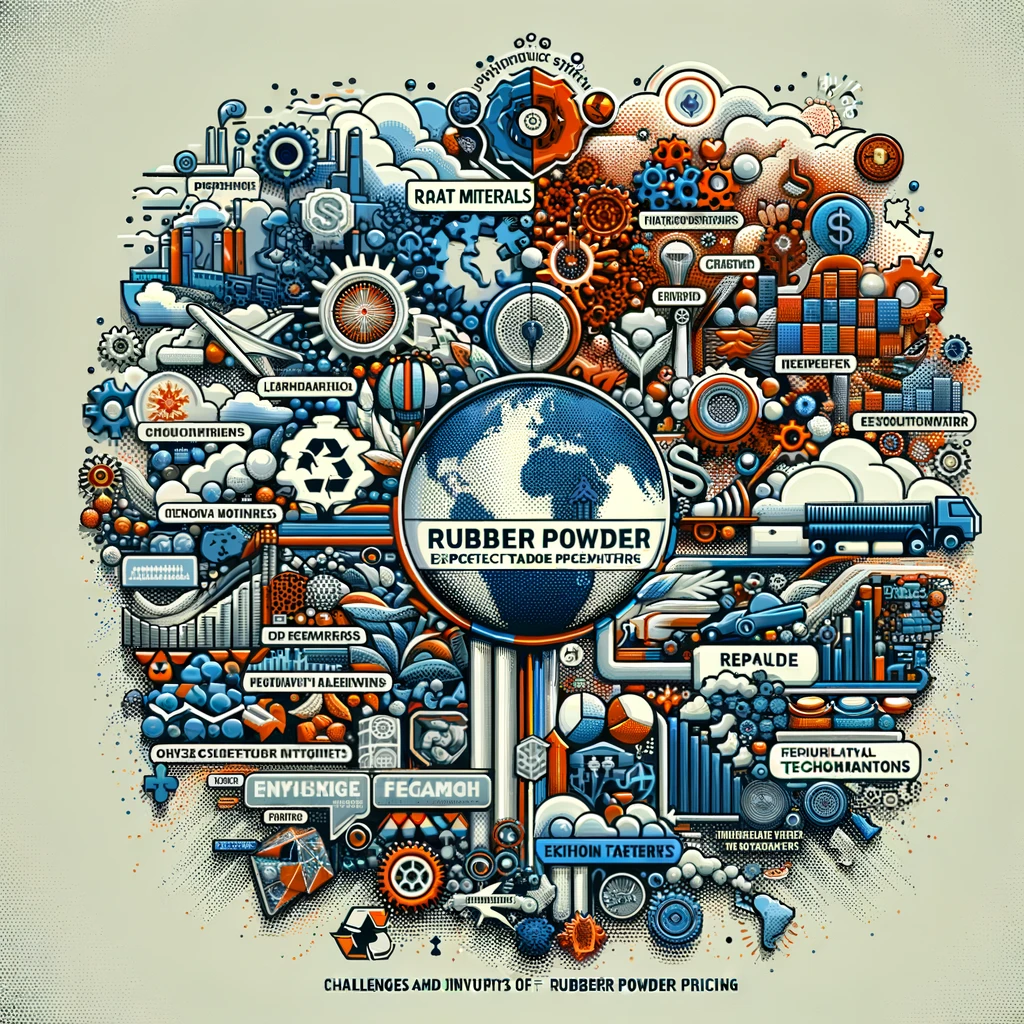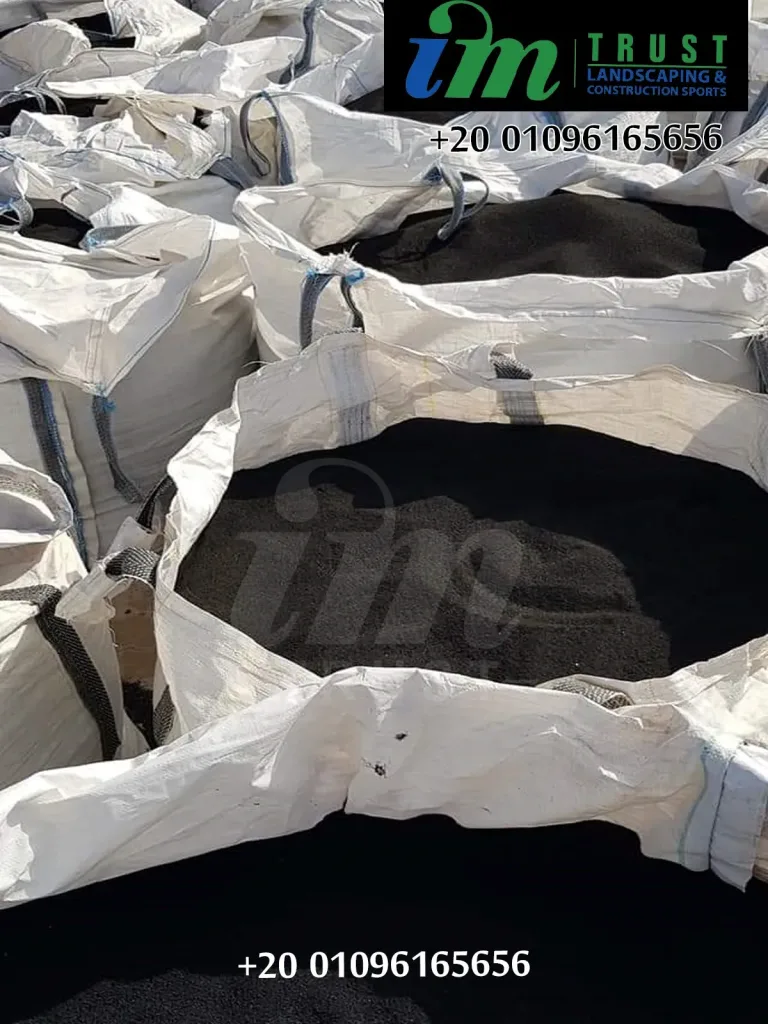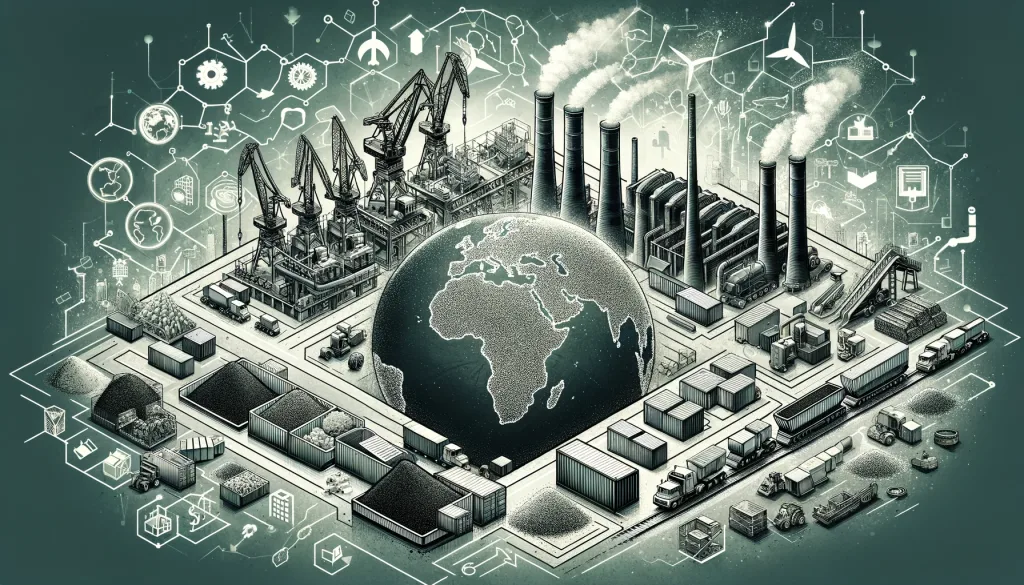Rubber Powder Price – High Export Best Sale All The World
Introduction to Rubber Powder and Its Global Market
The Essence of Rubber Powder
rubber powder price , a fine particulate derived from recycled tires and rubber products, serves as a foundational material across various sectors. Its applications range from paving roads to manufacturing new tires, playing a pivotal role in promoting sustainability and efficiency.
Global Market Dynamics
The global market for rubber powder is influenced by a complex web of factors, including environmental regulations, technological advancements, and the push for circular economies. These dynamics create a fluctuating demand landscape, where the strategic insights of industry leaders like IM TRUST FACTORY become invaluable.

Visit our FaceBook : IM TRUST FB
Significance in Industries
Rubber powder’s versatility is showcased in its use in automotive, construction, and sports surfaces, underscoring its economic importance. This broad applicability underscores the need for a nuanced understanding of market trends and pricing strategies.
Export-Import Price Influences
Prices for rubber powder on the international stage are shaped by production costs, logistical challenges, and trade policies. As countries navigate these economic waters, the export-import balance becomes a key factor in determining market stability and growth opportunities.
IM TRUST FACTORY’s Market Insights
IM TRUST FACTORY, with its deep-rooted knowledge and experience, offers critical insights into these pricing dynamics. Their analysis helps stakeholders make informed decisions, balancing cost-effectiveness with environmental sustainability.
Overview of Rubber Powder
 Rubber powder, a finely ground rubber produced from waste tires or directly from rubber compound, plays a pivotal role across various sectors. Its applications range from asphalt and construction materials to automotive parts and even athletic surfaces, showcasing its versatility. This material not only contributes to the circular economy by recycling waste but also enhances the performance and longevity of products through its unique properties.
Rubber powder, a finely ground rubber produced from waste tires or directly from rubber compound, plays a pivotal role across various sectors. Its applications range from asphalt and construction materials to automotive parts and even athletic surfaces, showcasing its versatility. This material not only contributes to the circular economy by recycling waste but also enhances the performance and longevity of products through its unique properties.
The manufacturing excellence of entities like IM TRUST FACTORY has propelled the rubber powder industry forward, offering insights into the market’s pricing dynamics. By understanding the production process and the factors that influence costs, stakeholders can better navigate the economic landscapes of rubber powder.
The Significance of Rubber Powder in the Global Economy
Rubber powder’s economic significance cannot be understated. It stands at the crossroads of sustainability and industrial efficiency, contributing significantly to sectors as diverse as automotive, where it’s used in tires and brake pads, and construction, for enhancing the durability of materials. Its role in promoting recycling efforts not only supports environmental sustainability but also offers economic benefits by reducing the reliance on virgin materials and lowering costs.
Global demand for rubber powder is driven by its myriad applications and the ongoing push for sustainable materials. As industries continue to seek eco-friendly alternatives, rubber powder emerges as a key player in the green economy, highlighting the importance of understanding its market dynamics.
Export-Import Dynamics in the Rubber Powder Market
The global market for rubber powder is influenced by a complex web of export-import dynamics, with countries like China, India, and the United States playing significant roles as both producers and consumers. Trade policies, tariffs, and geopolitical tensions can significantly impact prices, creating a volatile landscape for traders and manufacturers.
Understanding these dynamics is crucial for stakeholders aiming to navigate the market effectively. Insights from industry leaders like IM TRUST FACTORY can provide valuable guidance in this arena, shedding light on the strategies to mitigate risks and capitalize on opportunities in the global trade of rubber powder.
Understanding Rubber Powder Pricing Dynamics
 To fully grasp the economics of rubber powder, it’s crucial to delve into the factors influencing its pricing. This section will explore the global dynamics at play, including production costs, market demand, and geopolitical influences.
To fully grasp the economics of rubber powder, it’s crucial to delve into the factors influencing its pricing. This section will explore the global dynamics at play, including production costs, market demand, and geopolitical influences.
Factors Influencing Global Rubber Powder Prices
- Production Costs: The cost of producing rubber powder includes raw materials, labor, technology, and energy consumption. Fluctuations in these areas can directly affect pricing.
- Market Demand: Demand for rubber powder varies by industry and by the push towards sustainable materials. Higher demand can drive prices up, while lower demand can lead to price decreases.
- Geopolitical Influences: Trade policies, tariffs, and international relations can significantly impact rubber powder prices. Changes in these areas can cause market instability and pricing volatility.
IM TRUST FACTORY’s Insight into Pricing Dynamics
IM TRUST FACTORY, with its deep understanding of the rubber powder market, offers insights into how these factors converge to shape pricing strategies. Their expertise provides a valuable perspective on navigating the complexities of the global market.
Challenges in the Export-Import Market
The export-import market for rubber powder is fraught with challenges, including regulatory hurdles and tariff barriers. These obstacles can complicate pricing strategies and market access, requiring adept navigation and strategic planning.
Opportunities for Market Expansion
Despite these challenges, opportunities abound for market expansion, particularly in emerging economies and through technological innovation. Understanding the pricing dynamics is key to unlocking these opportunities and fostering growth in the rubber powder industry.
Future Trends in Rubber Powder Pricing
Looking ahead, several trends are poised to influence rubber powder pricing, including advancements in recycling technologies, increased environmental regulations, and shifts in global trade patterns. Monitoring these trends will be crucial for industry participants aiming to stay competitive and adapt to changing market conditions.
Factors Influencing Global Rubber Powder Prices
 The pricing of rubber powder is subject to a myriad of factors, each interwoven into the fabric of the global market. Production costs stand at the forefront, where the price of raw materials, the efficiency of manufacturing processes, and labor costs play pivotal roles. Innovations in technology can also swing the cost pendulum, potentially lowering prices through more efficient production methods or increasing them due to the adoption of costly new techniques.
The pricing of rubber powder is subject to a myriad of factors, each interwoven into the fabric of the global market. Production costs stand at the forefront, where the price of raw materials, the efficiency of manufacturing processes, and labor costs play pivotal roles. Innovations in technology can also swing the cost pendulum, potentially lowering prices through more efficient production methods or increasing them due to the adoption of costly new techniques.
Market demand further complicates the pricing landscape. As rubber powder finds applications in a broad array of industries—from automotive to construction—the demand from these sectors significantly influences price volatility. Seasonal trends, economic growth in key markets, and technological advancements in product development can all lead to shifts in demand, thereby affecting prices.
Geopolitical tensions and trade policies perhaps add the most unpredictability to rubber powder prices. Tariffs, import-export restrictions, and international conflicts can drastically alter the cost structure of rubber powder, affecting global supply chains. These factors underscore the importance of strategic planning and market analysis for businesses navigating this volatile market.
Understanding Rubber Powder Pricing Dynamics
Production Costs and Supply Chain Factors
- Explore the cost components involved in producing rubber powder, including raw material costs, energy consumption, and labor.
- Discuss the supply chain logistics that impact pricing, such as transportation and storage.
Demand Influences and Market Trends
- Analyze how demand for rubber powder in various industries affects prices.
- Examine current market trends, including environmental regulations and technological advancements.
Global Economic Conditions and Their Impact
- Consider the effects of global economic conditions, such as inflation rates and currency fluctuations, on rubber powder prices.
- Review geopolitical factors that may influence global trade dynamics and pricing.
Production Costs and Supply Chain Factors
The cost of manufacturing rubber powder is influenced by several key components, including the price
of raw materials (primarily waste tires), energy consumption during the recycling process, and labor costs.
These factors can vary significantly across different regions, affecting the overall pricing of rubber powder on a global scale.
Supply chain logistics, such as the efficiency of transportation networks and the cost of storage, also play a critical role in determining
final prices. Efficient supply chain management can lead to cost savings,
thereby influencing the competitive pricing of rubber powder in the market.
Demand Influences and Market Trends
Demand for rubber powder is primarily driven by its applications in various industries, including automotive, construction, and sports
facilities. An increase in demand from any of these sectors can lead to a rise in prices. Additionally, market trends such
as a growing emphasis on sustainable materials and recycling are bolstering demand for
rubber powder, potentially impacting prices. Technological advancements that enhance the
quality or applications of rubber powder can also influence market demand and pricing.
Global Economic Conditions and Their Impact
Rubber powder pricing is not immune to the broader global economic landscape. Inflation rates, currency
fluctuations, and changes in trade policies can all have a profound impact on costs. For instance,
tariffs imposed on rubber imports or exports can alter the competitive balance in the market, affecting
prices. Geopolitical tensions and trade agreements between major rubber-producing and -consuming
countries can further complicate the pricing dynamics, necessitating a keen understanding of global
economic conditions for anyone involved in the rubber powder trade.
IM TRUST FACTORY: A Key Player in the Rubber granules Industry
 Introduction to IM TRUST FACTORY
Introduction to IM TRUST FACTORY
- A brief overview of IM TRUST FACTORY, its history, and its contributions to the rubber powder industry.
- The company’s role in pioneering advancements and setting industry standards.
IM TRUST FACTORY’s Influence on Rubber
- How IM TRUST FACTORY’s production capabilities and market strategies impact global rubber powder prices.
- Analysis of IM TRUST FACTORY’s approach to managing supply chain and production costs to stay competitive.
Export-Import Strategies and Global Market Position
- Overview of IM TRUST FACTORY’s export-import strategies and how they navigate global trade dynamics.
- The role of IM TRUST FACTORY in shaping trade policies and pricing strategies in the rubber powder market.
Introduction to IM TRUST FACTORY
IM TRUST FACTORY stands as a beacon of innovation and excellence in the rubber powder industry. With a storied history of contributing significantly to the market, the company has established itself as a leader, setting benchmarks for quality and sustainability. Through its dedication to research and development, IM TRUST FACTORY has introduced numerous advancements, enhancing the efficiency and applications of rubber powder, thereby influencing industry standards globally.
IM TRUST FACTORY’s Influence
The production methodologies and market strategies employed by IM TRUST FACTORY have a considerable impact on the pricing dynamics of rubber powder. By optimizing production processes and leveraging advanced technologies, IM TRUST FACTORY efficiently manages production costs, enabling competitive pricing. Their strategic market positioning and pricing policies not only reflect their understanding of global market trends but also influence these trends, affecting rubber powder prices worldwide.
Export-Import Strategies and Global Market Position
IM TRUST FACTORY’s strategic approach to exports and imports exemplifies their adeptness at navigating complex global trade environments. Their export-import strategies are designed to maximize market reach while mitigating risks associated with geopolitical tensions and trade policies. As a key player in the rubber powder industry, IM TRUST FACTORY plays a crucial role in shaping trade policies and pricing strategies, contributing to the development of a more interconnected and efficient global market.
Challenges and Opportunities Export-Import Market
Navigating Regulatory Hurdles and Trade Barriers
- Examination of the regulatory challenges impacting the global rubber powder trade, including environmental regulations and safety standards.
- Discussion on tariffs, trade barriers, and how they affect market access and pricing.
Economic Fluctuations and Market Demand
- Analysis of how economic downturns and fluctuations impact demand for rubber powder.
- The role of emerging markets in driving growth and expanding opportunities for rubber powder exports and imports.
Technological Advancements and Sustainability Efforts
- Exploration of how technology is transforming the rubber powder industry, from production techniques to new applications.
- The impact of sustainability and recycling initiatives on market demand and the broader acceptance of rubber powder.
Navigating Regulatory Hurdles and Trade Barriers
The global trade of rubber powder is subject to a complex web of regulatory requirements and trade barriers that can significantly impact market dynamics. Environmental regulations, aimed at ensuring the safe and sustainable use of rubber powder, can vary widely by region, posing challenges for international traders. Tariffs and trade barriers further complicate the landscape, influencing pricing and access to different markets. Understanding and navigating these hurdles is crucial for companies looking to expand their presence in the global rubber powder market.
Economic Fluctuations and Market Demand
Economic conditions play a pivotal role in shaping the demand for rubber powder price . During economic downturns, industries that heavily utilize rubber powder, such as construction and automotive, may experience reduced activity, leading to lower demand for rubber powder. Conversely, economic growth, particularly in emerging markets, presents significant opportunities for the expansion of the rubber powder trade. These markets offer new avenues for growth, driven by increasing industrialization and infrastructure development.
Technological Advancements and Sustainability Efforts
Technological innovation is a key driver of change in the rubber powder price industry, offering opportunities to enhance production efficiency, develop new applications, and improve product quality. Additionally, a growing focus on sustainability and recycling across industries is bolstering the demand for rubber powder. As companies and consumers increasingly prioritize eco-friendly materials, the rubber powder market is likely to see expanded interest and adoption. These trends not only represent opportunities for growth but also underscore the importance of innovation and environmental stewardship in the industry.
Future Trends and Price Predictions in the Rubber Powder Market
Emerging Market Trends
- Discussion on the emerging trends in the rubber powder price market, including increased demand for eco-friendly and sustainable materials.
- The potential impact of global environmental policies on the production and trade of rubber powder price .
Technological Innovations Impacting the Industry
- Exploration of technological advancements in rubber powder production and recycling processes.
- How these innovations could lead to more efficient manufacturing processes and new applications, influencing market dynamics.
Price Predictions and Market Dynamics
- Analysis of current market conditions and their potential impact on future rubber powder prices.
- Predictions on how global economic factors, supply chain developments, and demand fluctuations might shape pricing strategies in the coming years.
Emerging Market Trends
The rubber powder price market is on the cusp of transformation, driven by a growing emphasis on sustainability and eco-friendliness. As global environmental policies become more stringent, the demand for sustainable materials, including recycled rubber powder price , is expected to rise. This shift is likely to influence production practices, encouraging more environmentally conscious manufacturing and potentially impacting global trade dynamics as countries align with these new standards.
Technological Innovations Impacting the Industry
Technological innovations hold the key to revolutionizing the rubber powder price industry. Advances in recycling technologies and production processes promise to enhance efficiency, reduce costs, and open up new applications for rubber powder. These developments could significantly influence market dynamics, driving demand for rubber powder in novel and traditional applications alike, and ultimately affecting global supply and pricing strategies.
Price Predictions and Market Dynamics
Looking ahead, the rubber powder price market is poised for fluctuations influenced by a variety of factors, including global economic trends, supply chain innovations, and shifts in demand. While precise price predictions are challenging, the ongoing emphasis on sustainability, coupled with technological advancements, suggests a positive trajectory for the market. Companies and stakeholders should remain agile, ready to adapt to these evolving dynamics to capitalize on future opportunities.
Future Trends and Price Predictions in the Rubber Powder Market
 Emerging Market Trends
Emerging Market Trends
- Identification of key trends currently emerging in the rubber powder market, such as increased demand for sustainable materials and advancements in rubber recycling technologies.
- The potential impact of these trends on global supply and demand dynamics.
Price Predictions and Market Dynamics
- An analysis of factors likely to influence rubber powder prices in the short and long term, including raw material availability, technological innovations, and changes in global trade policies.
- Predictions on how these factors could shape market dynamics and pricing strategies.
Preparing for the Future
- Strategies for stakeholders to navigate future market changes, including investment in technology and sustainability, and adaptation to evolving global trade environments.
- The importance of continuous market analysis and flexibility in business planning.
Emerging Market Trends
The rubber powder market is poised at the cusp of significant transformation, driven by the escalating demand for eco-friendly materials and breakthroughs in recycling processes. These trends are expected to have a profound effect on supply and demand, potentially leading to tighter supplies and increased prices for high-quality, sustainably sourced rubber powder. As industries worldwide strive for greener alternatives, the rubber powder market is likely to witness a surge in innovation and expansion.
Price Predictions and Market Dynamics
Looking ahead, several factors are anticipated to influence the trajectory of rubber powder prices. Innovations in rubber recycling technology could lower production costs and increase supply, potentially stabilizing prices. However, fluctuating raw material costs and geopolitical factors could introduce volatility into the market. Anticipating these movements, stakeholders should remain vigilant, leveraging market analysis to inform their strategies. Overall, the demand for rubber powder, fueled by its sustainability profile and diverse applications, is likely to keep prices on an upward trend, albeit with fluctuations based on external factors.
Preparing for the Future
For stakeholders in the rubber powder market, preparing for future shifts is paramount. Embracing technological advancements and integrating sustainability into core business strategies will be crucial for maintaining competitiveness. Additionally, adapting to the evolving trade landscape and remaining flexible in response to market changes will enable companies to navigate uncertainties more effectively. Continuous monitoring of market trends and proactive planning are essential for capitalizing on emerging opportunities and mitigating potential risks.

Visit our FaceBook : IM TRUST FB
#RubberPowder #RubberGranules #SBR #ModifiedAsphalt #AsphaltAdditives #ConstructionMaterials #RubberSupplier #SBRSupplier #PowderSupplier
#RoadConstruction #Infrastructure #EcoFriendlyMaterials #SustainableSolutions


 Introduction to IM TRUST FACTORY
Introduction to IM TRUST FACTORY Emerging Market Trends
Emerging Market Trends














